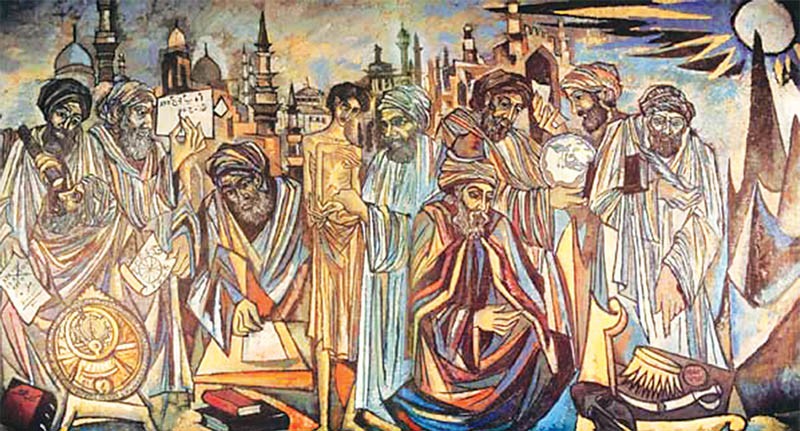
The superfluous debate of what makes one a better teacher of art

"I don’t like cats, why did you paint them, please remove them from your work". This was the only criticism a teacher from an art institution had on the work of her student, leaving the young artist perplexed and dejected. The artist presumed she had achieved a level of artistic excellence through her series of miniatures with one or more cats perched on sofas, lying on carpet, or walking aimlessly. Yet the work was rejected by her tutor.
The teacher’s behaviour was rightfully denounced by most of the faculty. The student was advised to pursue her line of interest and choice of imagery, and ignore the tutor’s private preferences.
However, the teacher’s comment does pose a question. A painter herself with numerous shows to her credit, the statement is part of her whole world view or at least her idea of art.
She loathes cats -- may be due to their lazy existence or clingy nature. However, her reaction must be rooted in some system of beliefs and/or conscious decisions as per which the rendering of a cat cannot be tolerated. Her response relates to her general comprehension of art which connects to choices in her own art and reactions to works by others.
The crucial question in this situation is how to balance a practising artist’s individual biases and an educationist’s knowledge on aesthetic matters. And how can one differentiate a private preference from a professional position. In most cases both intermingle.
When it comes to practising artists, one’s peculiar likes and dislikes hardly matter because these are translated and transformed in their artwork. A creative person is admired on a simple factor: his position on art and life is unique, challenging, shocking and often controversial (if not scandalous). There have been numerous examples of an artist’s politically incorrect, illogical and offensive remarks and actions. Yet the work is accepted, acknowledged and appreciated simply because of a singular person’s eccentricities.
But if he is employed at an art institution, his ideas on art are not confined to his studio, but to his classroom too where he is guiding young artists according to his opinions and evaluating them. So, what happens if someone does not like flies, dogs, crows, cows or camels? Or the head of the state, a specific nation, a certain medium or a particular genre.
An art teacher’s views are not about an outsider’s opinions; these relate to grading of students’ output which is judged and thus justified for a larger audience. So, one must be prepared to accept these decisions. Because a person who is condemning cats in a miniature must be doing so not on whimsical grounds but on the basis of some rational reasons. Perhaps, he or she thinks the inclusion of feline elements does not elevate a painted surface to the realm of art. But a tutor who has such views about a specie may be against certain art forms too.
The real issue in this regard is the distinction between a practising artist and a professional art teacher. Artists like Rashid Rana, Subodh Gupta, Shilpa Gupta or Raana Begum pursue their creative vision regardless of what others think. They follow their calling which in some sense is about questioning, challenging and negating the established approaches. But when it comes to art teaching, one has to shift one’s position, pay attention, approve and agree with the views of another person who happens to be the student.
It is here that the conflict starts. As a famous artist you are respected for your individual, exclusive vision but as an art teacher when that view collides with another, you become disoriented. Because as an artist one has a particular way of dealing with ‘reality’ but as a teacher if that version is confronted or opposed by other solutions, mainly of young students from far off regions, one faces a big problem.
The contradiction lies between the two roles -- artist and art teacher. In many parts of the world including India, major artists are not associated with art institutions. But here, in Pakistan, the leading artists have been associated with art schools, from Shakir Ali, Zeinul Abedien, Anna Molka Ahmed, Zahoor ul Akhlaq to younger generation such as Rashid Rana, Imran Qureshi, Risham Syed, Adeela Suleman and others.
Apart from these names, there are people engaged at art schools who are merely ‘teachers’ and not active artists. In some instances, artists refuse to be inducted as teachers or if they are part of the faculty, they do not perform fully or selflessly. Thus, for an art school the real dilemma is to keep a balance between ‘art teachers’ and ‘artists’, both working at the same place.
Art teachers guide with their educationalist exercises, pedagogical expertise and range of experiments with the learning process in a systemic manner but may fail to lead the students. While an artist who happens to be around the art school may suggest a new way of looking and locating the art/world through his own practice.
Ideally, one needs a typical art teacher, always present, punctual, attentive and facilitating along with a practising, prominent artist who is dismissive, distant and indifferent to whatever is made, yet inspires and influences his pupils by example.
Perhaps this uncertainty provides the two-folded tier of teaching -- guiding students on each and every stage of their learning process or becoming mentors with minimum presence and interaction. In some sense, the debate is superfluous because in order to become an artist you don’t necessarily have to study art formally. You could be a Gauguin, Van Gogh, Jasper Johns, Frida Kahlo, Basquiat, Ai Weiwei or Sadequain.